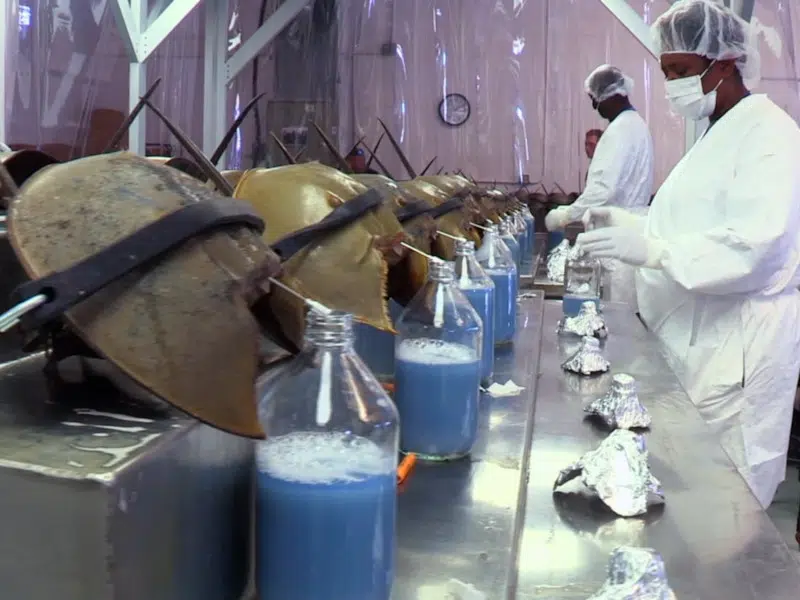
Better than the blood of a unicorn, the blue blood of horseshoe crab that saves thousands of lives.


The horseshoe crab, a prehistoric animal that invented the first antibacterial.

The horseshoe crab is an underwater animal that has existed for 445 million years. Despite the 17 ice ages this species has known and survived various waves of massive extinctions, the horseshoe crab has not evolved since.
Its bizarre appearance with its shell and 10 eyes could make us believe that it is a kind of bizarre crab. In reality, the horseshoe crab is closer to the scorpion and belongs to the arthropod family.

Living being generally composed of a single cell and microscopic in size.

What is fascinating about this animal is above all its blood. In fact, unlike us and the other mammals that inhabit this planet, the horseshoe crab has blue blood.
This difference in color can be explained by its composition, which is different from ours. In humans, for example, blood is red because hemoglobin, which carries oxygen in our blood, contains iron. In contrast, horseshoe crab blood contains another compound that carries oxygen, hemocyanin, which is rich in copper. It is copper that gives the blue color to horseshoe crab blood.



Pharmaceutical companies are mainly looking for this blood because it contains a very important molecule called Limulus Amebocyte Lysate. A very complicated name that can be summed up in 3 letters: LAL.
This molecule is a powerful antibacterial agent. The smallest bacteria present in tiny quantities and immediately destroyed, even the most dangerous. This animal uses this defense system to heal its wounds, which inspired researchers around the world to create new medical tests, capable of detecting bacteria and other pathogenic strains.



It’s a protein that carries oxygen through our blood.
Yes, and that’s why horseshoe crab blood is in great demand. Tests developed by pharmacists have made it possible to control tens of thousands of people to treat them against bacterial infections.

Pharmaceutical companies take only a third of the animal’s blood before putting it back into the sea. Despite this, 15% of horseshoe crabs die from these blood samples.
But that’s not all, horseshoe crab blood comes at a price. It is estimated that one liter is worth 15,000 US dollars (14,000 euros). This stimulates poachers to fish for resale to Asian companies.
Beyond prohibited fishing and pharmaceutical use, many fishermen use it as bait to catch American eels and conchs.
Following the worrying decrease in the number of horseshoe crabs, pharmaceutical companies are trying to synthesize this magic product themselves.

Copyright © 2023 | CurioKids.net - All rights reserved